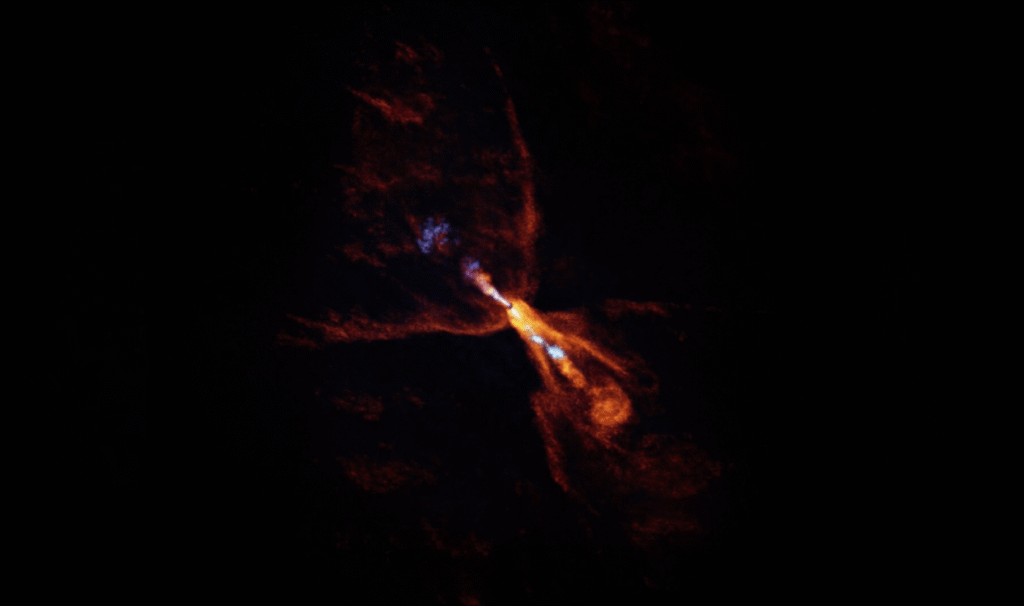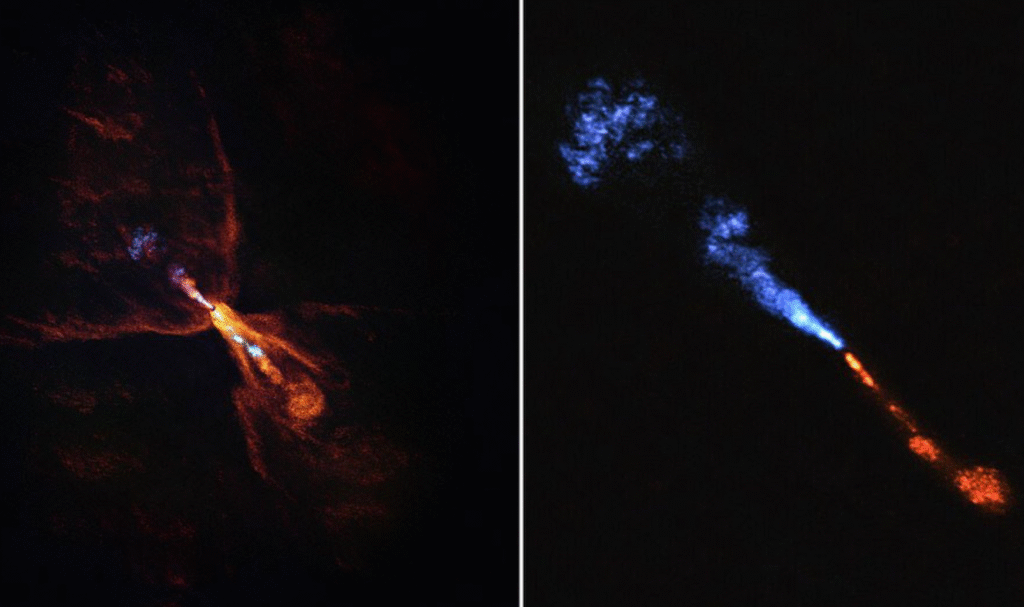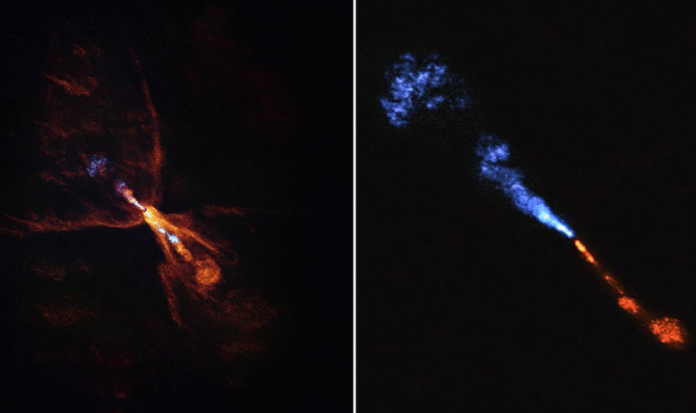A Breakthrough Look at the Birth of a Solar System

In a historic breakthrough, scientists have observed the birth of a solar system for the very first time. This rare cosmic event is happening around a young star named HOPS-315, located 1,300 light years away in the Orion Nebula. The star is believed to resemble our Sun in its early stages.
Surrounding the baby star is a swirling disc of gas and dust, known as a protoplanetary disc. Inside this disc, hot crystalline minerals containing silicon monoxide are clumping together. These minerals may eventually grow into planetesimals, early building blocks that form full-sized planets over time.
This discovery provides a window into how planets like Earth and Jupiter began forming billions of years ago.
Signs of Planet Formation Detected
The first clues of planet formation came from NASA’s James Webb Space Telescope. Scientists then used Chile’s ALMA telescope to pinpoint where the solid minerals were forming in HOPS-315’s disc.
They found the minerals in a small ring of dust, resembling the asteroid belt in our own Solar System. This is the earliest stage of planet formation ever witnessed outside our solar neighborhood.
According to lead researcher Melissa McClure from Leiden University, this marks the first time scientists have seen the starting point of planet birth around a star other than the Sun.

Insights into Our Solar System’s Origins
This discovery is more than a scientific milestone, it’s a glimpse into our own cosmic history. Study co-author Merel van’t Hoff from Purdue University said, “We’re seeing a system that looks like what our Solar System looked like when it was just beginning to form.”
By watching the birth of a solar system unfold, astronomers hope to better understand how Earth and potentially other habitable worlds came into existence.

